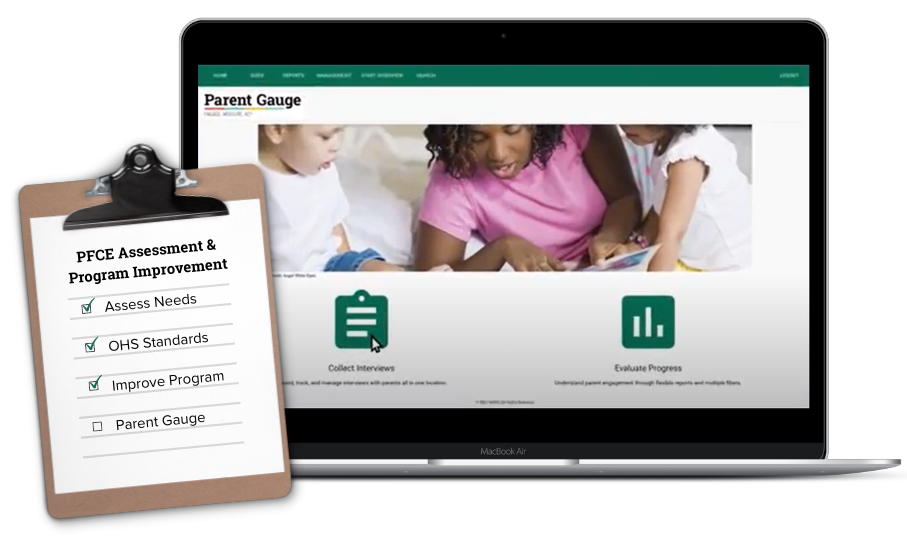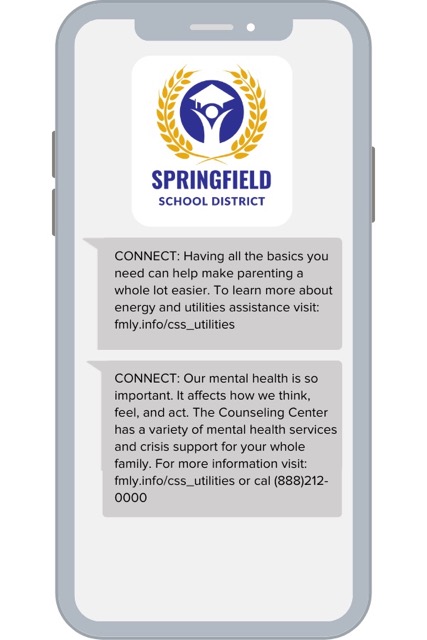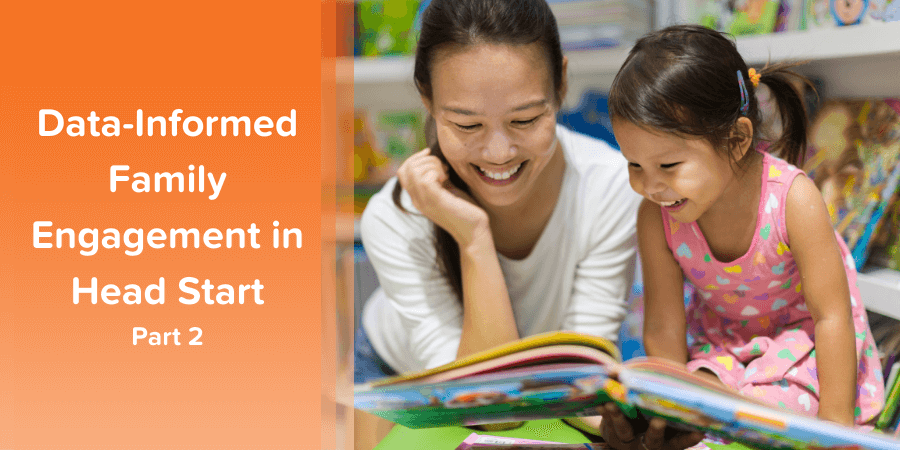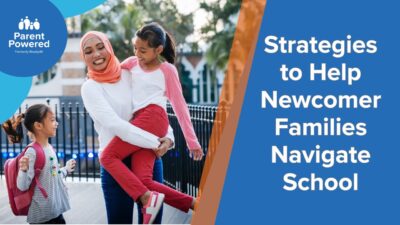By Maren Madalyn, contributing writer
This post is part 2 of a 3-part series exploring how to use PFCE data-informed approaches to increase the efficacy of Head Start family engagement efforts and other services in early childhood programs. You can read Part 1 here. Watch our recent webinar with the National Head Start Association about how Parent Gauge and ParentPowered Trauma-Informed combine to create powerful family engagement!
Family and community engagement is one of the core Head Start program foundations for cultivating positive child and family outcomes. It is crucial to engage families in our youngest learners’ journeys. After all, families are a child’s first teachers, and family engagement has a huge positive impact on their long-term well-being and success.
In Part 1 of this series, we unpacked why a data-informed approach to family engagement matters for early childhood educational programs like Head Start. Further, we highlighted how this method ensures Head Start programming meets evolving family needs throughout the year — through small, incremental changes based on PFCE data.

In Part 2, we walk through what it looks like to apply a data-driven approach to navigate program change and impact family engagement outcomes. Following an imaginary Head Start program on its journey through a typical year, we will learn how staff leverages PFCE data, text-based everyday learning moments, and family feedback surveys to iterate on educational services for families.
Using Parent Gauge and ParentPowered Trauma-Informed together can help Head Start program teams like yours drive continuous improvement in all aspects of family engagement — ensuring the right support at the right time, all year long.

Use the right PFCE data to assess family needs
Imagine it’s the start of a fresh school year in your Head Start program. Families new and returning are arriving in your centers, some excited and some perhaps nervous. Your staff stands at the entrance, preparing to greet returning families and to start relationships with parents new to the program. The whole team is ready to go!
As a new program year begins, your Head Start programs focus on connecting with your families – and this of course means conducting your family strengths and needs assessments to understand what supports families and young children need most. Whether a family has participated in your program for five years or just recently moved to town, their PFCE data highlights which areas your family engagement efforts must target — from immediate home stability issues to child development concerns to behavior challenges and much more.
But this data isn’t just for building a road map of effective engagement for the year. Your program educators also measure program impact through PFCE data, making sure that your efforts have the positive benefit on family needs as desired. Having the right assessment approach and tool for gathering PFCE data can make all the difference in your team’s planning.

A traditional family strengths and needs assessment typically uses a series of simple yes-no questions about a family’s situation at home. But this method is limited in its scope of understanding the full picture of a family in context.
First, a checklist does not take into account the many other critical components to family stability and well-being, components that may inform program efforts for children and families. Additionally, the binary PFCE data that emerges from a checklist misses out on the strengths and assets that families bring to the family-program partnership that contribute to their child’s development. Your Head Start program staff will benefit from assessment tools that capture the nuances of both your families’ needs and strengths at the start of the year, so that your team may better tailor programming to meet those varying needs.
This is why Parent Gauge goes beyond a simple checklist in its strengths and needs assessment. It is designed to reliably and validly guide structured conversations between your families and staff at key times during the school year.

As a web-based tool, it allows your team to easily manage a family’s responses to empirically validated questions, both in written and audio formats for additional context. Each question aligns with the PFCE framework, too, ensuring that your Head Start program team captures the right information to inform your efforts for engaging parents in kindergarten readiness and early childhood learning.
Here’s an example: your Head Start program team completes its assessments with Parent Gauge at the start of the year as you meet with your families. While reviewing the summary of parent responses to questions about housing, you see that 95% of your families are already employed and have secure housing.
Of course, those families that don’t have these assets would benefit greatly from support in these areas — but now your team knows that this service can be tailored to a smaller group, to boost the capacity of families specifically in need of these resources. Secure housing and employment do not need to be an overall program priority, since many of your families already have these strengths at their disposal.
Gathering the right PFCE data is critical to developing a targeted family support program and a road map for progress toward family well-being and positive child outcomes. Parent Gauge allows your Head Start program to refine its understanding of families’ unique strengths and needs to better tailor your efforts to meet them.

Plan & implement right-sized family engagement
At this point, your Head Start program team has successfully completed its strengths and needs research with families, and it’s time to get planning. Perhaps your team schedules a series of Parent Workshops throughout the school year, each one tackling a new topic desired by families through engaging and fun activities. Or your team might put together specific learning materials for families to use at home geared towards the most critical learning needs of students.
Of course, your PFCE data collected helps identify all these amazing opportunities to make the biggest impact!
In fact, this year your team noticed that many questions around communication, reading, and literacy scored lower on average across your families. This need is clearly a priority for this year’s cohort.

So your team ensures that the Parent Workshops calendar includes plenty of topics on reading and communication between parents and little learners. Your team also recognizes that these workshops aren’t always accessible to families, so you organize several virtual family events around these in-person opportunities.
How else can your team elevate this support for reading and communication skills with families — especially within budget, staff and time constraints?
If you’re using ParentPowered Trauma-Informed, then you know your families will have such ongoing support right at their fingertips. This curriculum provides your families each week with easy, everyday learning moments that benefit both children and adults. Topics include literacy, relationships, executive functioning, and much more.
The best part? They’re all delivered right to your families’ pockets through text messaging — no extra people, time, resources, or efforts for parents required. More specifically, ParentPowered Trauma-Informed delivers 3 messages per week to families which highlight facts and tips for promoting their child’s learning and development all year long (including summertime).

The themes of these messages cycle through the skills covered in the Protective Factors Framework, helping families buffer the effects of trauma and navigate challenges and adversity. For example, your families might receive a message that explains the importance of problem-solving skills and how they can practice these abilities with their kids as they get ready for school each morning. Learn more about the Protective Factors Framework and its impact on family and student well-being in our recent blog post.
But your team can go even further to directly target family support on reading and communication. As part of your programming, your Head Start program staff may connect families with local community services and programs, such as food assistance programs or early childhood mental health programs. Conducting a community resource-mapping exercise is a great first step to ensuring families have updated information and access to such resources, whether you offer them through your Head Start program or through your community partners. Read our recent article all about connecting families with community resources for an in-depth guide to community resource mapping.
If your Head Start program uses ParentPowered Trauma-Informed, you can leverage the Community Support Stream feature to get resources into families’ hands. Teams can craft customized text messages highlighting local services around them, curated by your program team. These messages include contact information such as phone numbers or websites for families to easily reach out to these community organizations for immediate support.

Further, by explaining the value of each resource shared and that families are not alone in their challenges, your CONNECT messages help normalize family needs, encouraging them to reach out for support and reducing some of the negative effects of stigma.
By planning family engagement strategies with equity and community resources in mind, your Head Start program team can design offerings to meet all of your families’ unique needs, setting up them and their littlest learners for success.

Take your data-informed family engagement to the next level
In Part 3, we will better understand how your Head Start program team can continue to deepen relationships with parents and monitor community engagement with services throughout the program year. Both ParentPowered Trauma-Informed and Parent Gauge help your program to maintain a positive, ongoing impact on family and child well-being.
Eager to learn more about a data-driven approach to family engagement in early childhood education and Head Start programs? Watch our recent webinar with the National Head Start Association about how Parent Gauge and ParentPowered Trauma-Informed combine to create powerful family engagement!

About the author
Maren Madalyn has worked at the intersection of K12 education and technology for over a decade, serving in roles ranging from counseling to customer success to product management. She blends this expertise with fluid writing and strategic problem-solving to help education organizations create thoughtful long-form content that empowers educators.





